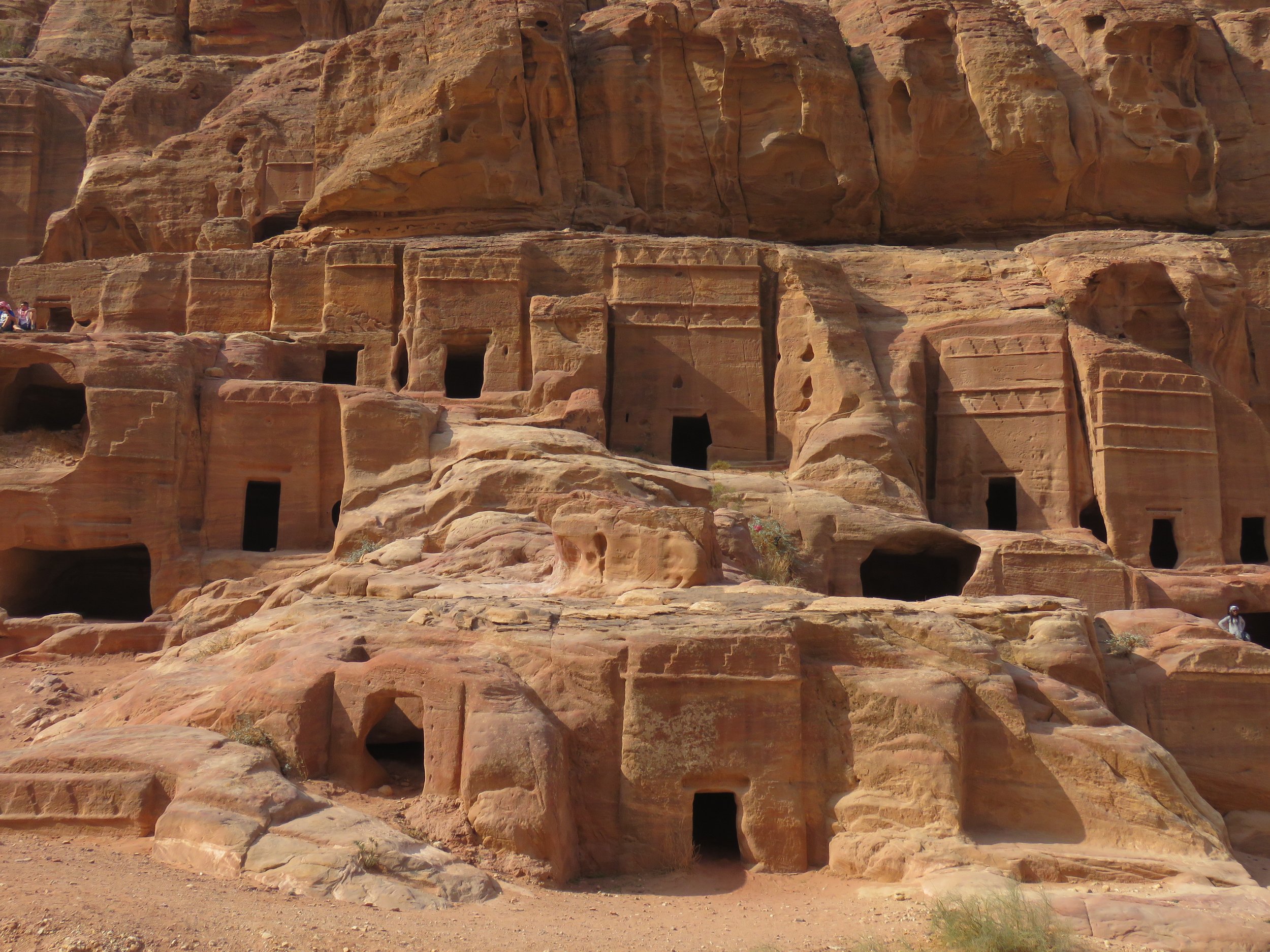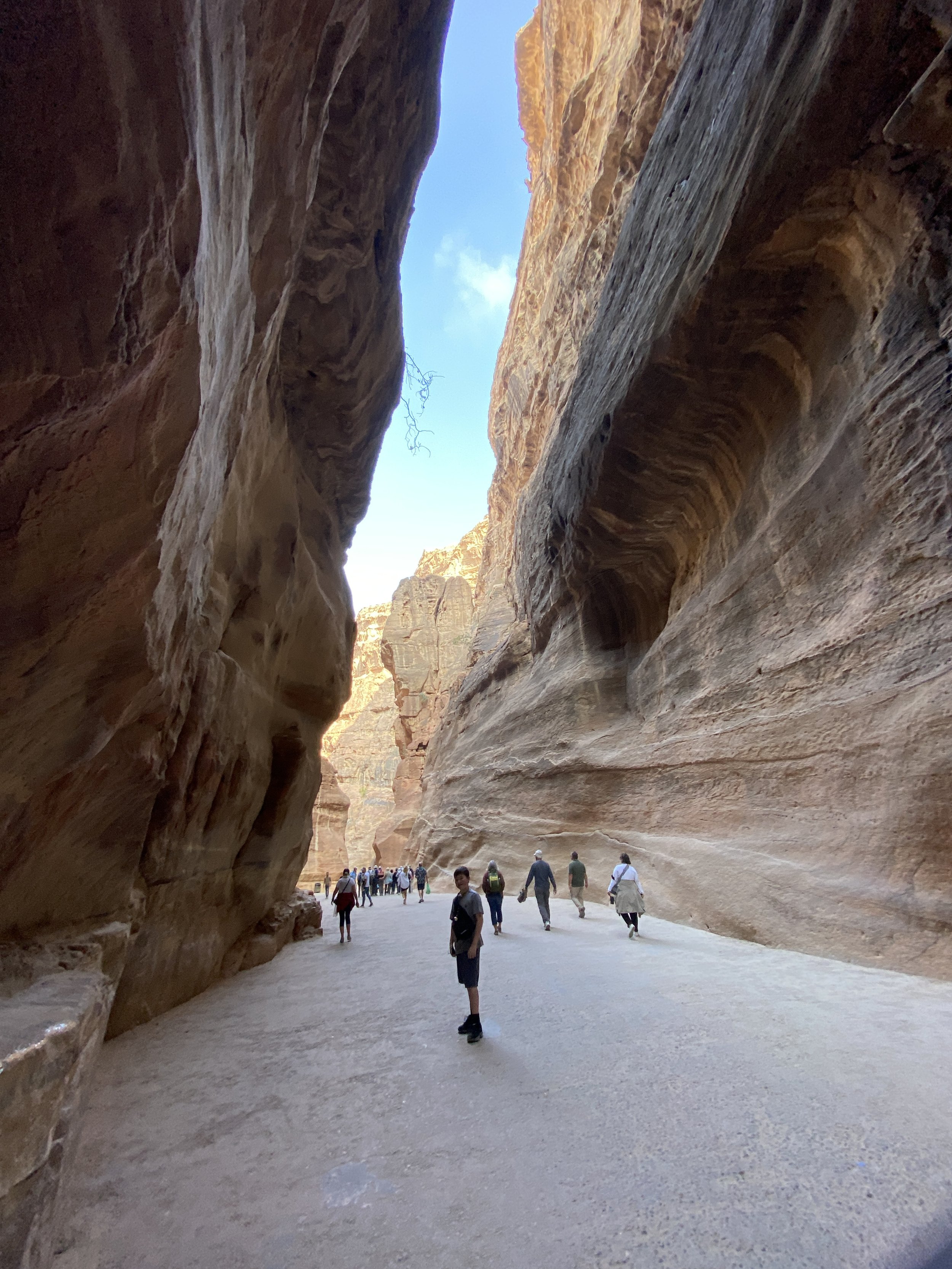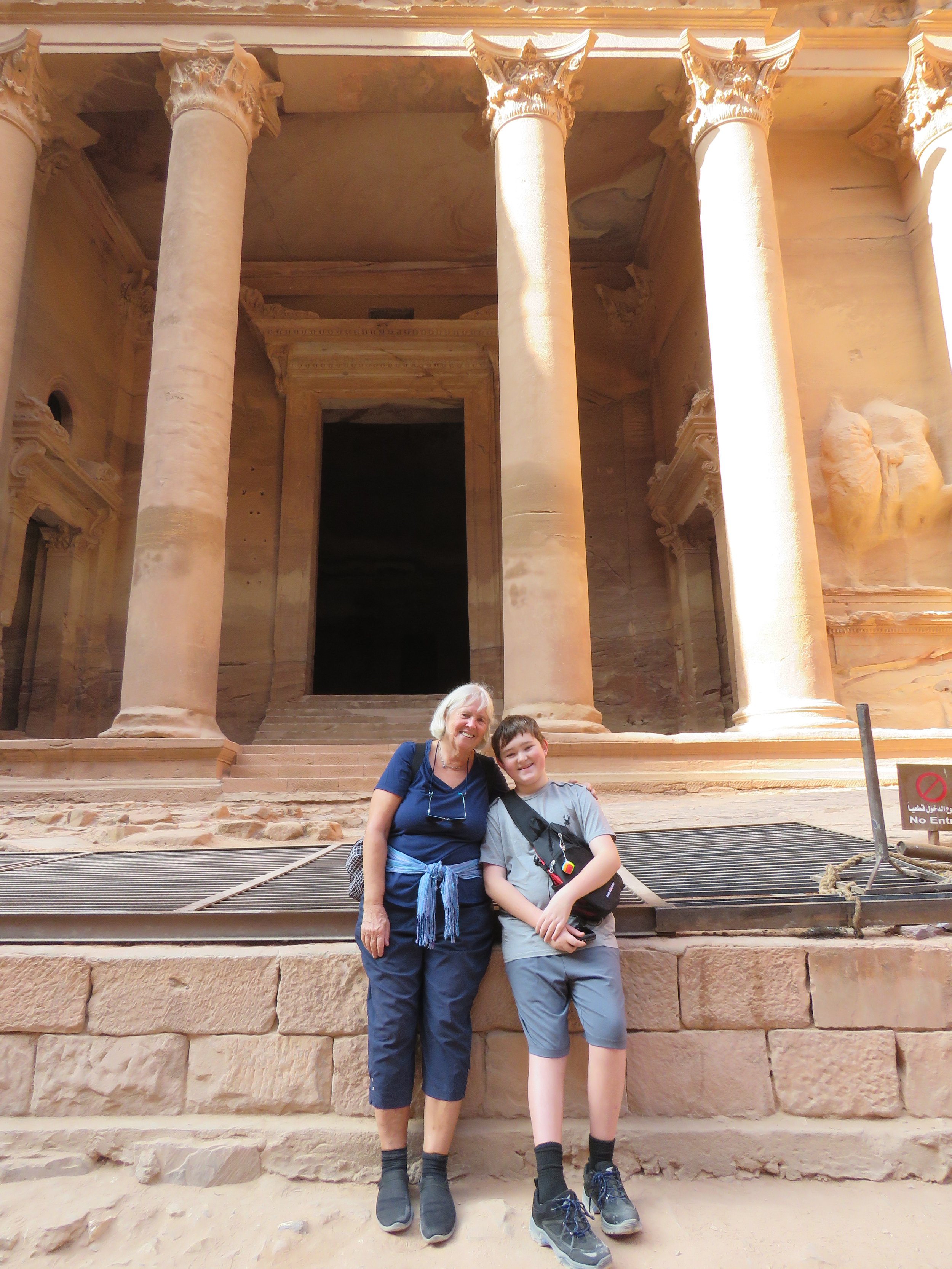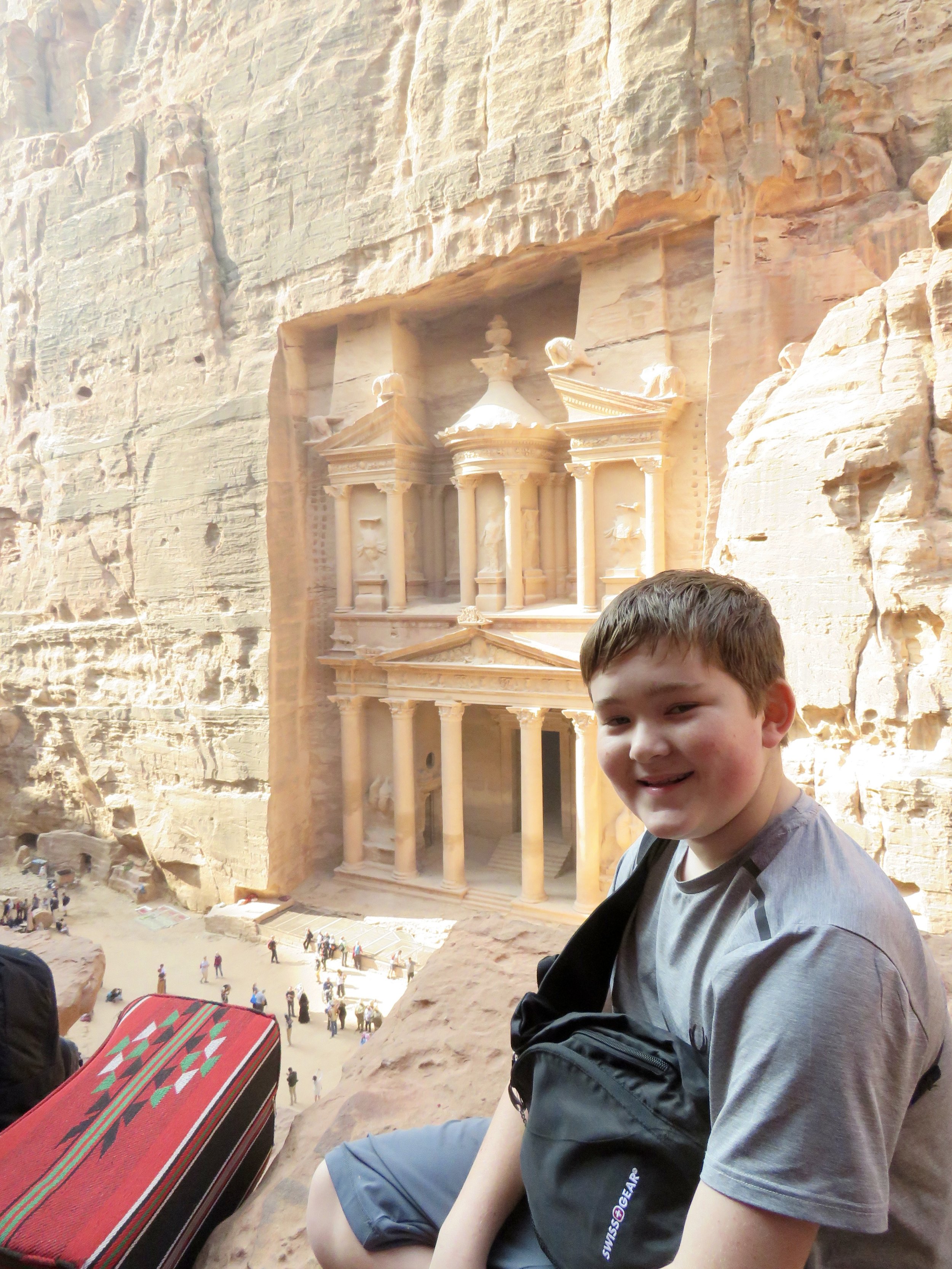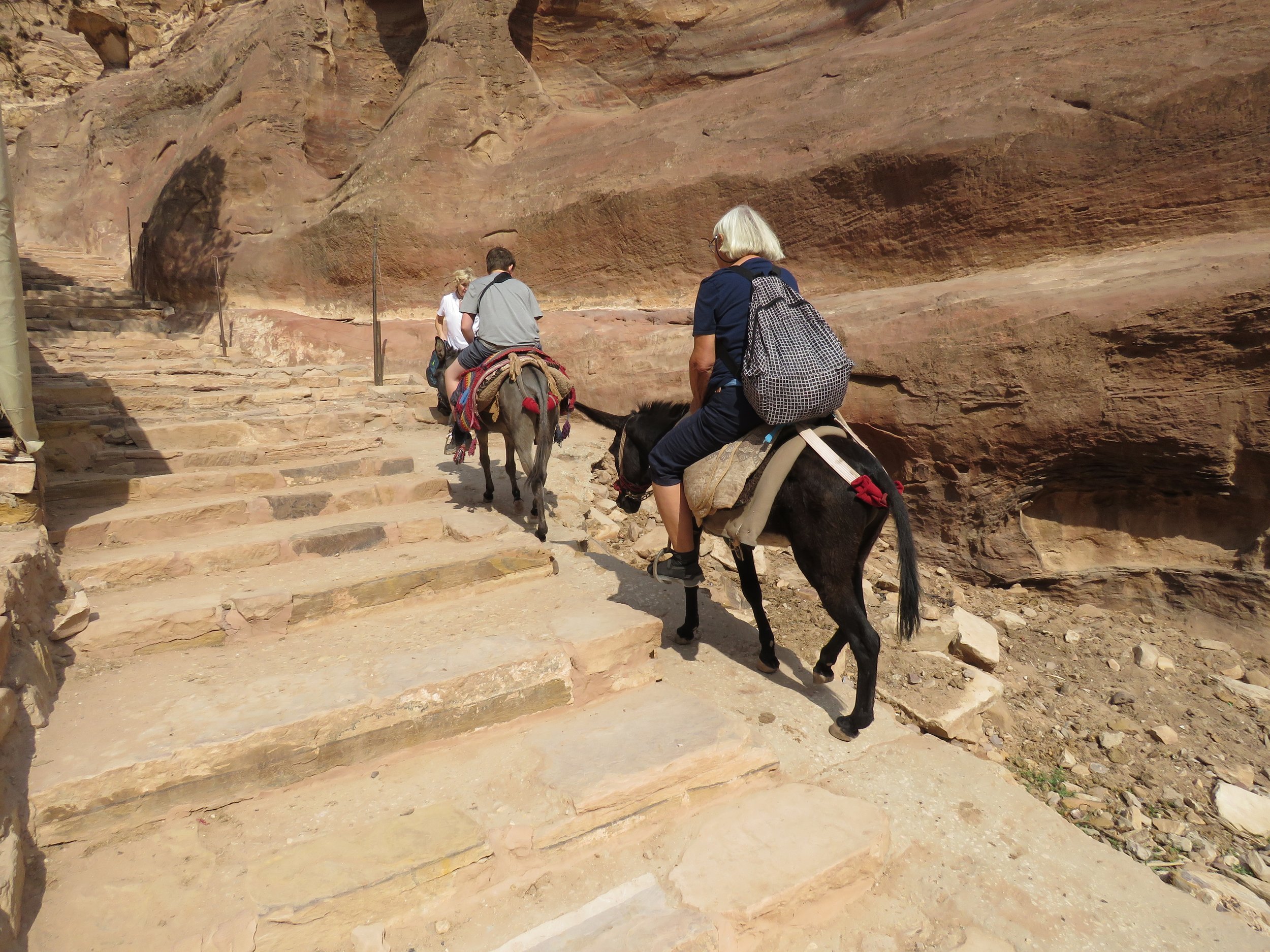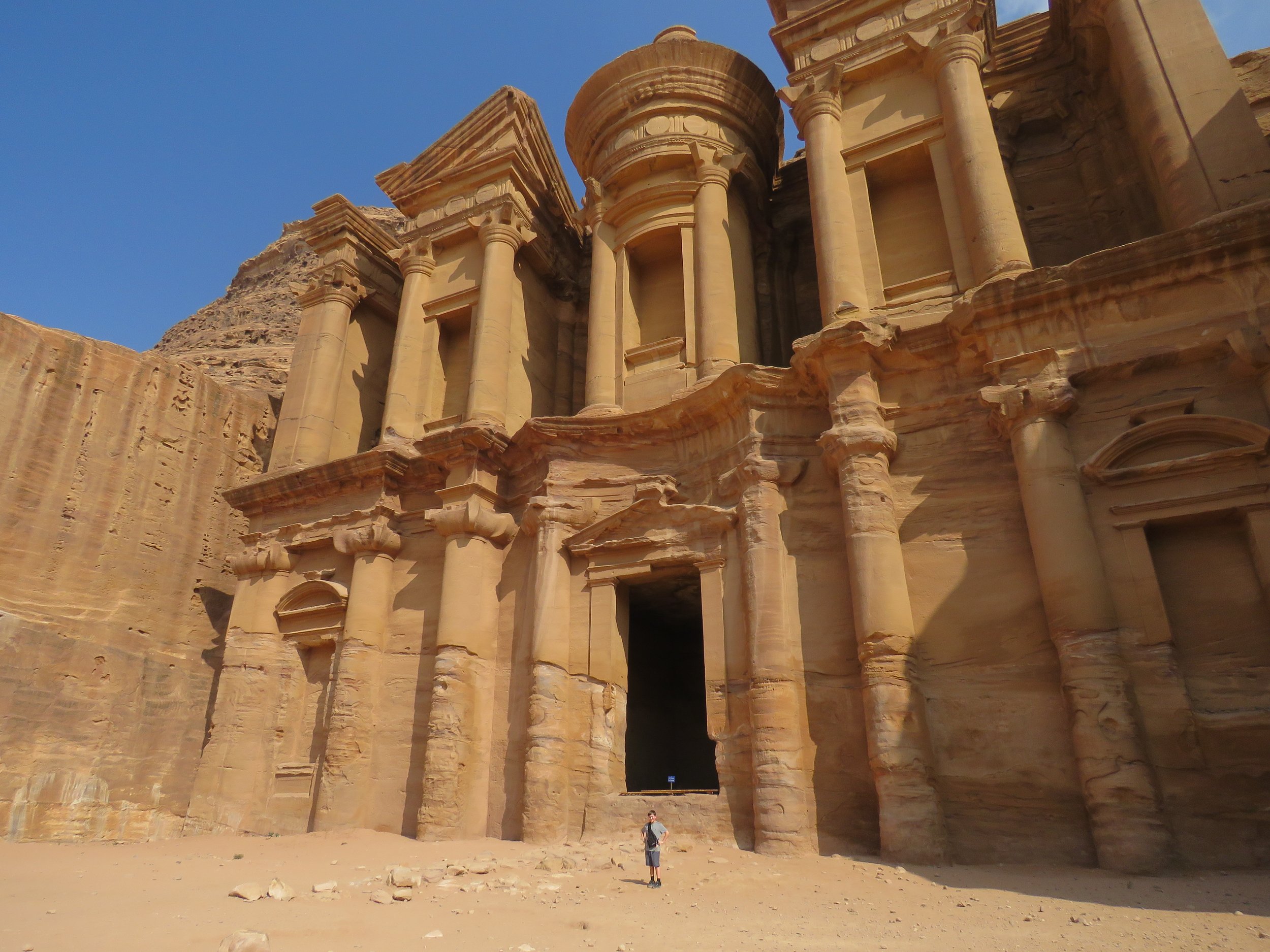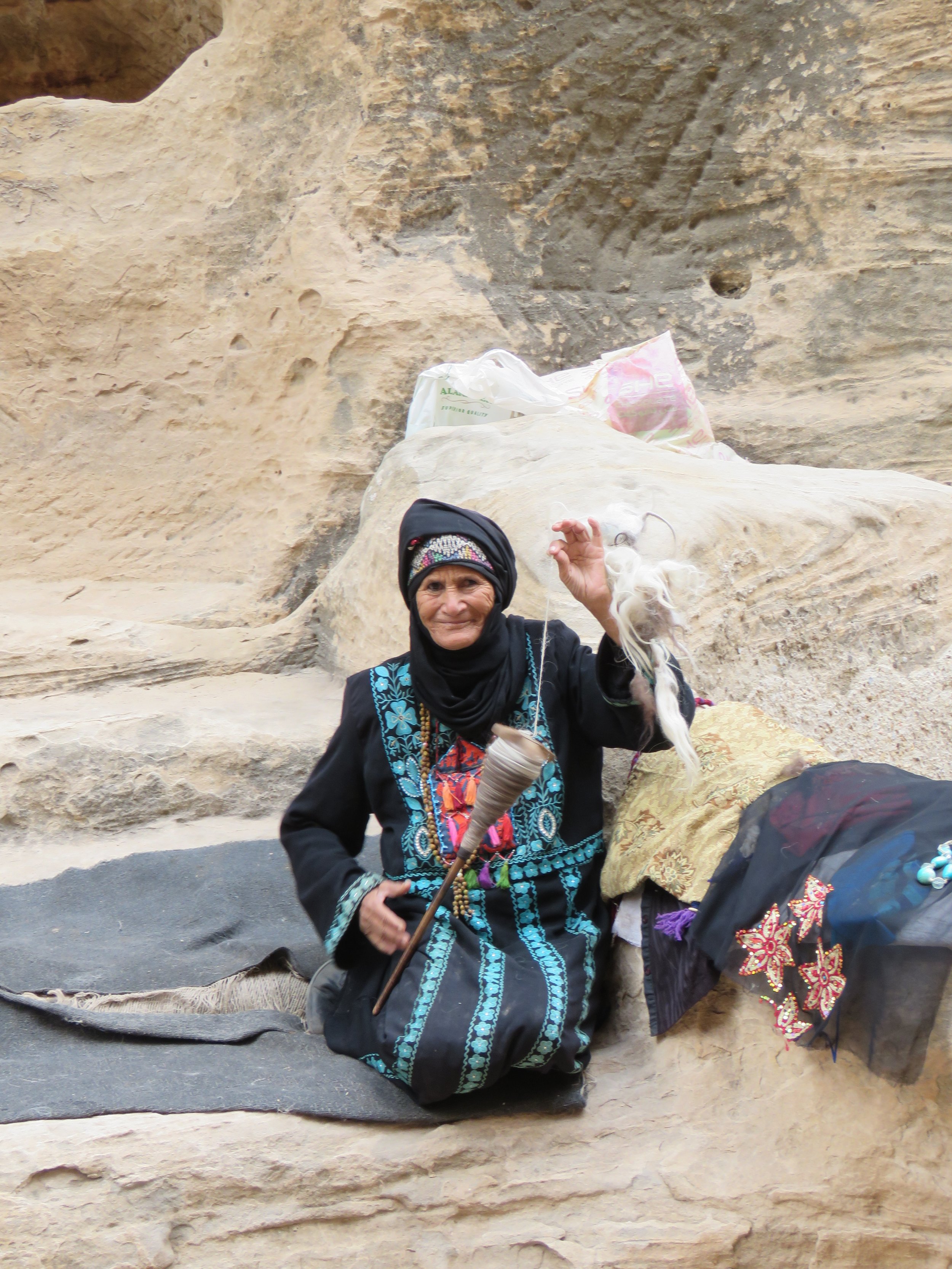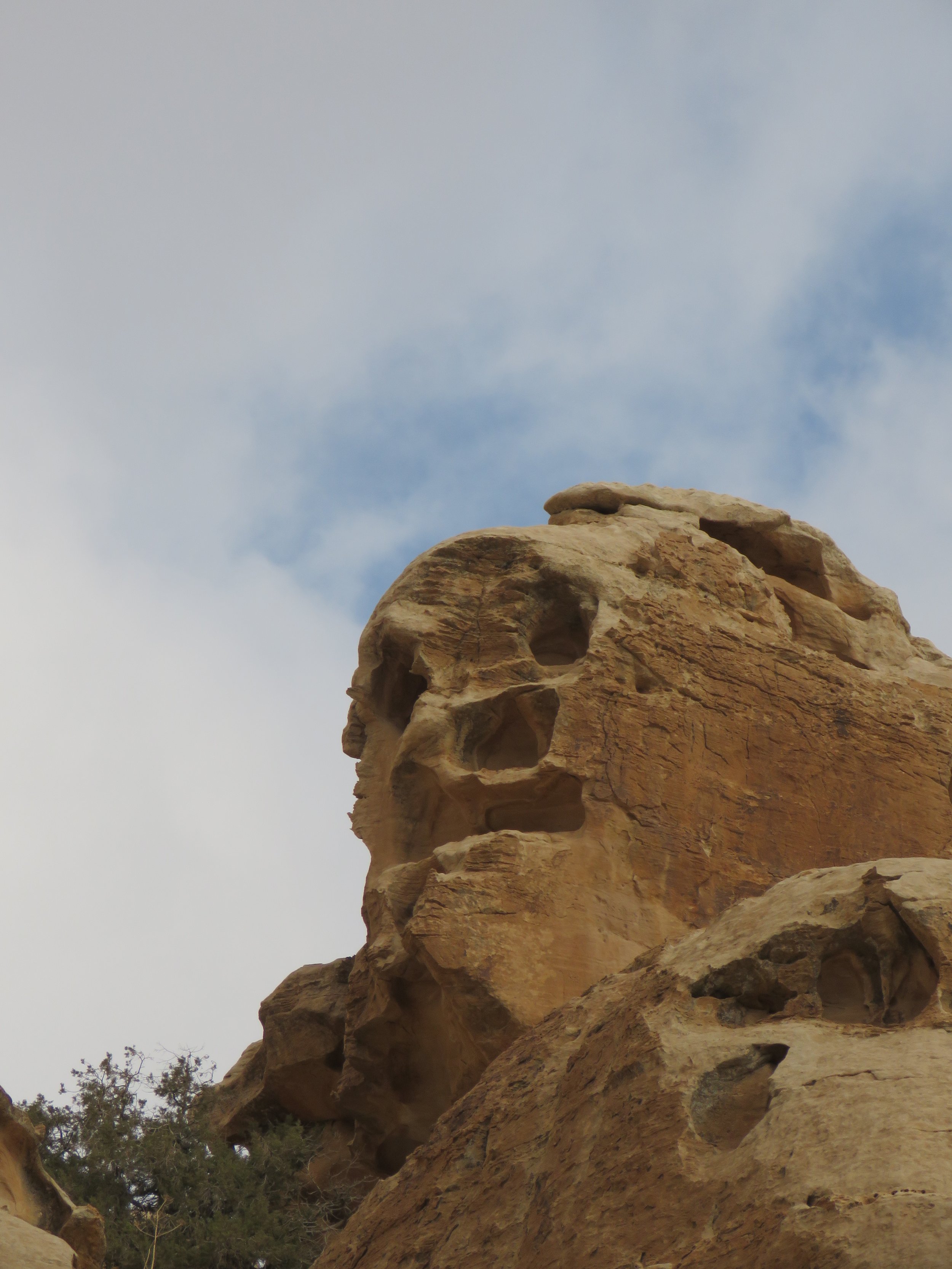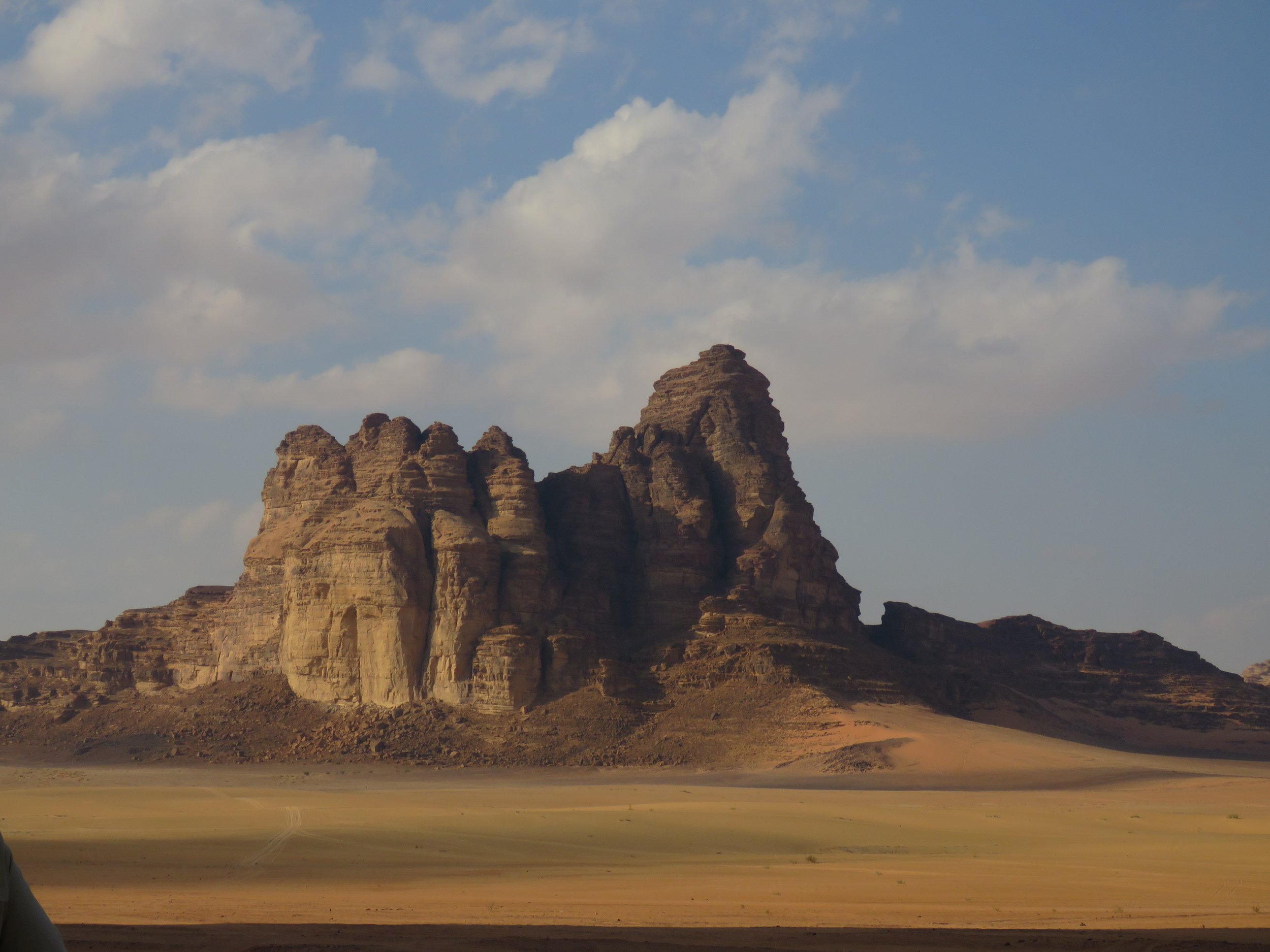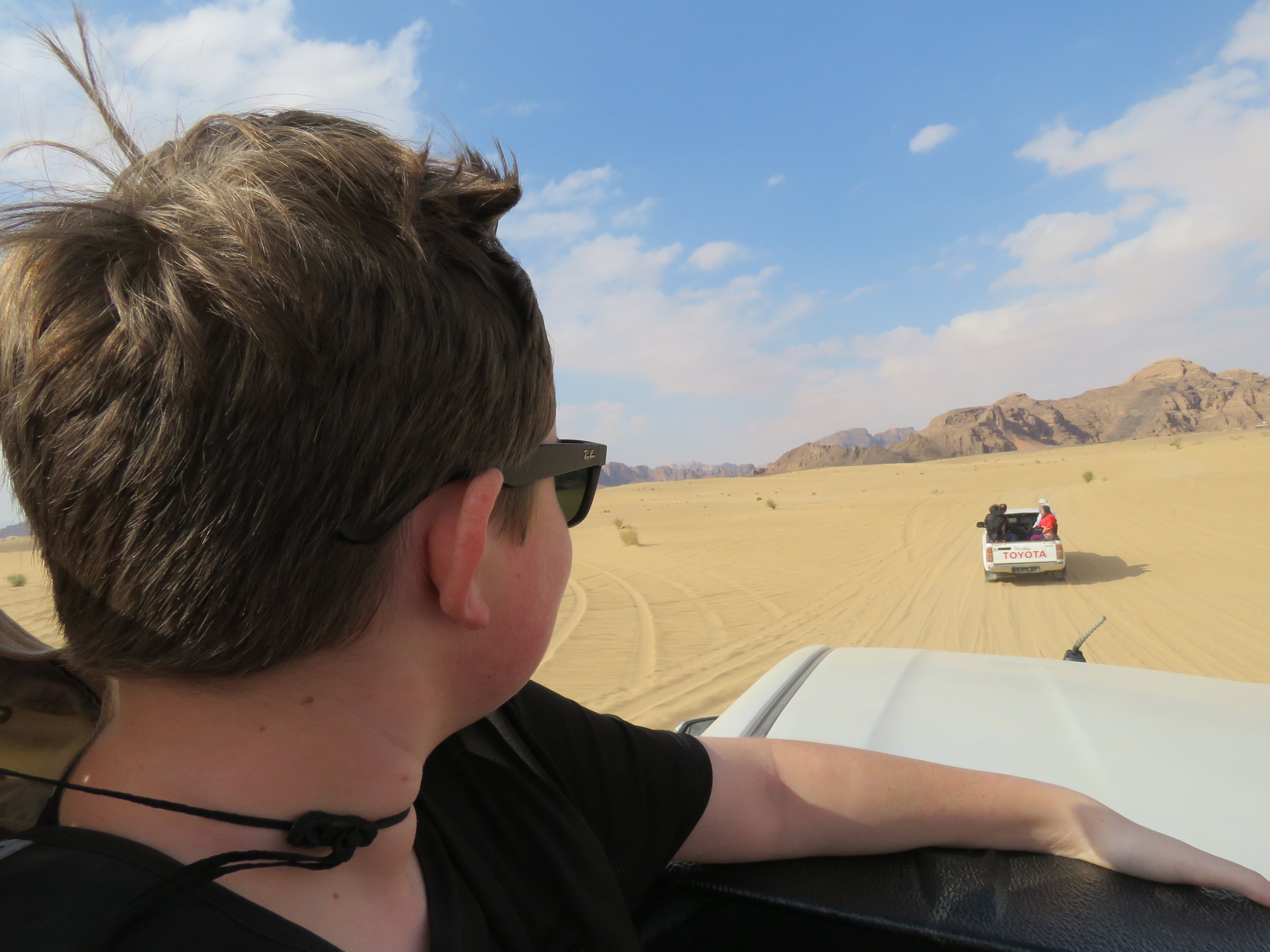One of the main attractions of Jordan is Petra. A world wonder… that truly is what Petra is.
Image a steep canyon, valleys surrounded by steep, red sand cliffs, and - further out - nothing but desert. Now travel, in your mind, in among those steep cliffs and picture a bustling city. It’s around the year 300 BCE. There are traders and craftmen, families living in rounded caves.
The people are the Nabataeans. In another few hundred years they will be conqured by the Romans and their city will get Roman roads and pillars as it becomes part of the Roman Empire. But for now, the Nabataeans control trade and travel across the Middle East.
More than a thousand years from now, you will still be able to see the remains of their networks of water storage, transport, and irrigation systems. And of course, their buildings.
The Nabateans carved enormous facades out of the red rock cliffs. Behind these imposing fronts, are small dark openings to what was mostly used as tombs. But how were they carved? They had no tools other than stones. But they possibly used ropes to suspend builders from the top of the rock faces. The designs of the buildings are amazingly accurate and symmetrical and include pillars and intricate details. Many of these buildings will withstand drought, sun, wind, torrential rains and earthquakes. The area now now as Petra has been designated a UNESCO World Heritage site in 1985 and was named one of the new world wonders in 2007.
The Siq
Now picture the year 1812. A Swiss wandered, disguised as Arab, convinced a Bedouin guide to lead him to the lost city. It has lain in ruins, hidden by the steep cliffs around it. I always wonder what it would be like to be the first person come across a site like this and ‘rediscover’ it. Now of course, Petra is bustling with tourists and a main source of income for the country.
Look at the people below to see the scale of the building!
To enter the ‘city’ you have to follow a path called The Siq, through a narrow 2 km long canyon. Its reddish sandstone walls remind me of canyons in Utah. But along the steep sides runs an ancient, man-made water trough - the main supply of water to Petra. Then, when you reach the end of the canyon, you take one more step and suddenly it’s there: a large plaza faced by the Treasury: a red rock building carved from the stone mountainside. Its pillars and ornamental facade are startling, almost at contrast with its natural surroundings. Only about 15% of the area has been excavated by archaeologists so far.
Nico stood in awe, as I had done the first time I laid eyes on the Treasury. The square in front was crowded with camels and vendors hawking their wear. Nico immediately noticed that Bedouin guides would lead tourists up the rockface immediately opposite the Treasury, to spot where there was a rock crop-out. “Can we go there?” he pointed. “Sure!” this grandma said, and as I clambered up the steep rock face behind him and the young guide, I wondered how my visit would be different now that I had brought along a 12-year-old. At the top, pillows had been spread out and we were served a traditional cup of Bedouin tea. As we sipped it, we stared in awe at the Treasury, now directly in front and below us.
We did not realize how lucky we were with the beautiful sunny weather. Less than a month after our visit we saw headline news about torrential rain that created water falls down the cliff, the Siq filled with a current and tourists who had to get evacuated!
Once we scrambled down again, we walked and walked and walked. Past many facades of ancient, carved buildings and cave dwellings. We walked past souvenir stalls and camels waiting to carrying tourists. We walked until we reached the Roman era roads and pillars of Petra.
Then I knew that we should climb up and up the other side of the valley to see the other main building of Petra: the Monastery which was equally impressive, carved from the rocks and likely served as a temple.
But neither Nico nor I had the energy to make it all the way up thousands of steps, after having walked about 15 KM already in the heat..
Then we were introduced to Ferrari - a donkey ready to trot all the way up. Even though we felt bad to make a donkey do this trek, we both enjoyed our ride up the mountain. Clinging on to our saddles, we passed people and cats.
The Amazing Donkey Race Petra..
We did have to walk all the way down but were thrilled that we did it. The Monastery is awe-inspiring. As we sat in the shade, gazing up at the ancient building, we heard Italian, Spanish, German, Dutch and many other languages from hordes of visitors from around the world. It seems that everyone had decided that the Middle East was free of Covid and safe to explore.
Nico in front of the impressive Monastery, Petra
Just outside Petra is the historic city of Wadi Musa. Once we spent all day walking, we did not have the energy to walk all the way uphill into the city to get back to our hotel. So we took a taxi ride, had a shower and collapsed on our beds for a 10 hour sleep!
Bedouin woman weaving.
The people who traditionally live in this area of Jordan are the Bedouin. Originally a nomadic tribe, they mostly lived in traditional, black woven tents and moved with their livestock. I noticed many tents spread throughout the desert, as we drove south from Amman. Our guide explained that these are either Bedouin or gypsies. “How can you tell the difference?, I asked. His response was, “Gypsies don’t keep livestock.” The tents of the Bedouin were surrounded by goats, sheep, donkeys and/or camels.
In Petra, the young men selling souvenirs or acting as guides are all Bedouin. I asked one of them how they were effected during Covid. “There were no tourists, no income,” he said, “I took my goats and went into the hills for two years. I ate bread but there was no money for much else.” No wonder they were all trying to sell everything to the many tourists that have now flocked to Petra again.
Skull Rock
We also visited Little Petra, a relatively undeveloped site nearby Wadi Rum with cave dwellings and ancient water systems. En route we drove through a small village were many of the previously nomadic Bedouin have now been resettled in houses. How different their lifestyle has became in modern times, with homes, education and health care. But is it better?
From Petra, we headed south into Wadi Rum. Wadi Rum is Jordan’s main desert. It encompasses some 74,200 hectares (about 183,352 acres) and is protected as a World Heritage site. Besides stunning desert landscapes, Wadi Rum is an important cultural landscape with over 25,000 petroglyphs inscriptions, and over a hundred archaeological sites tracing human evolution and the early development of the alphabet.
The petroglyphs here span eras from the Neolithic to the Nabataean and represent human figures holding bows and arrows, animals such as camels and horses all point to a long history of civilization here. More recently, the desert served as a Hollywood setting for movies like The Martian (2015), The Last Days on Mars (2013), Red Planet (2000), Mission to Mars and of course for Lawrence of Arabia. The Marsian movies led to many Marsian themed camps that are now everywhere. You can sleep in white domes and pretend you are on Mars.
The Seven Pillars of Wisdom
Most trips to Jordan include an overnight stay in Wadi Rum. When I was here a few years ago, we stayed in a ‘real’, traditional tent camp. This time Marsian tents dotted the landscape. We opted for a more traditional Bedouin style camp with black and red woven walls. Our camp turned out to be cabins dressed up to look like tents, but it is still a fun experience. The silence and the stars in the desert are awesome. And the meals are typical Bedouin food: meat and vegetables roasted on coals in the ground. And a flat bread baked on a warm dome over a coal fire.
Nico’s favourite activity of our entire trip happened in Wadi Rum when he spent several hours 4x4 ing on the sand dunes. Dominating the gentle sand hills were the iconic Seven Pillars of Wisdom. I loved being woken up in the middle of the night, when a million stars twinkled above the desert, and listening to the howls of hyenas.
RESOURCES:
Petra: https://www.nationalgeographic.com/history/article/lost-city-petra?loggedin=true&rnd=1672261225878
https://cnewa.org/magazine/mysterious-petra-rediscovered-30139/

